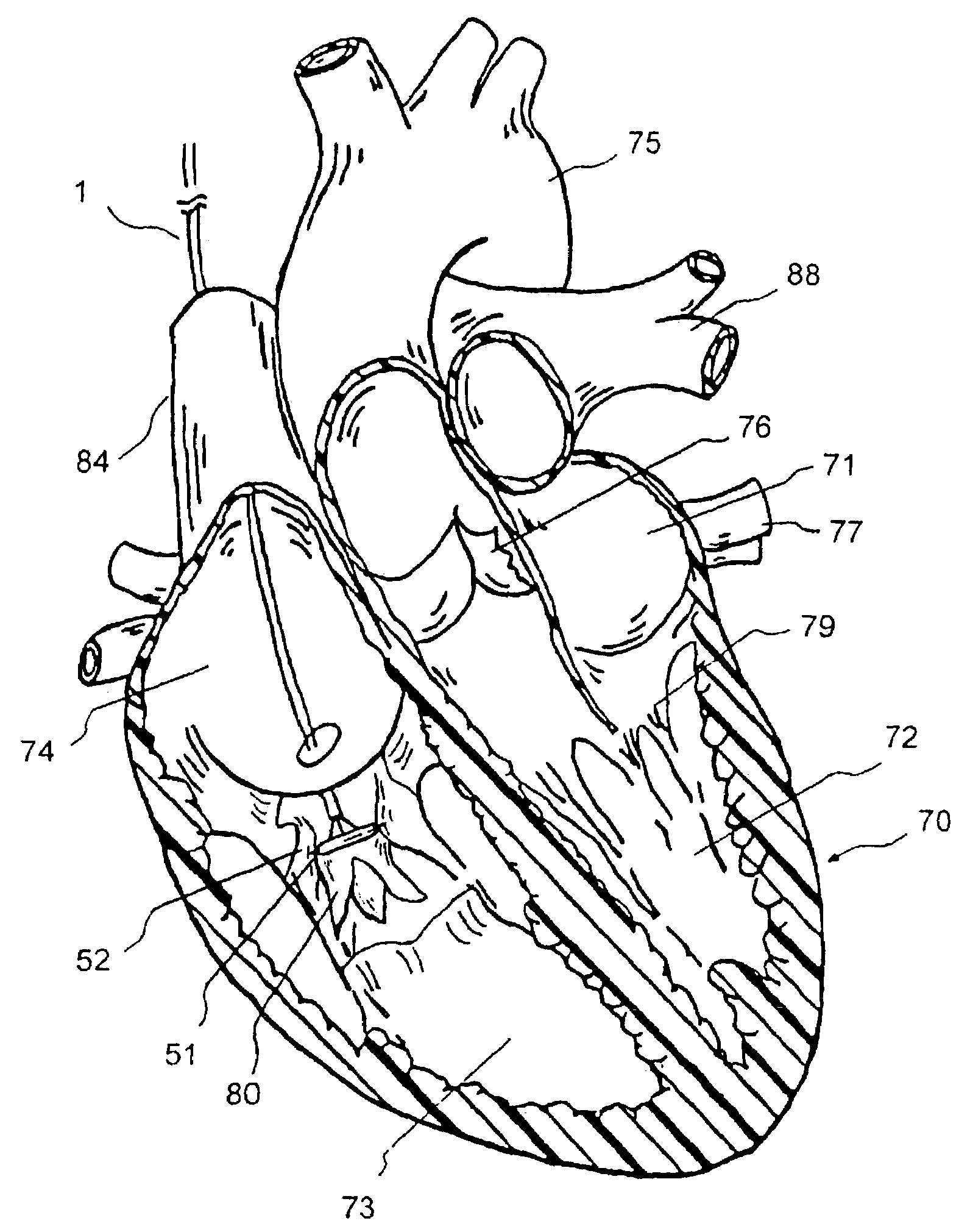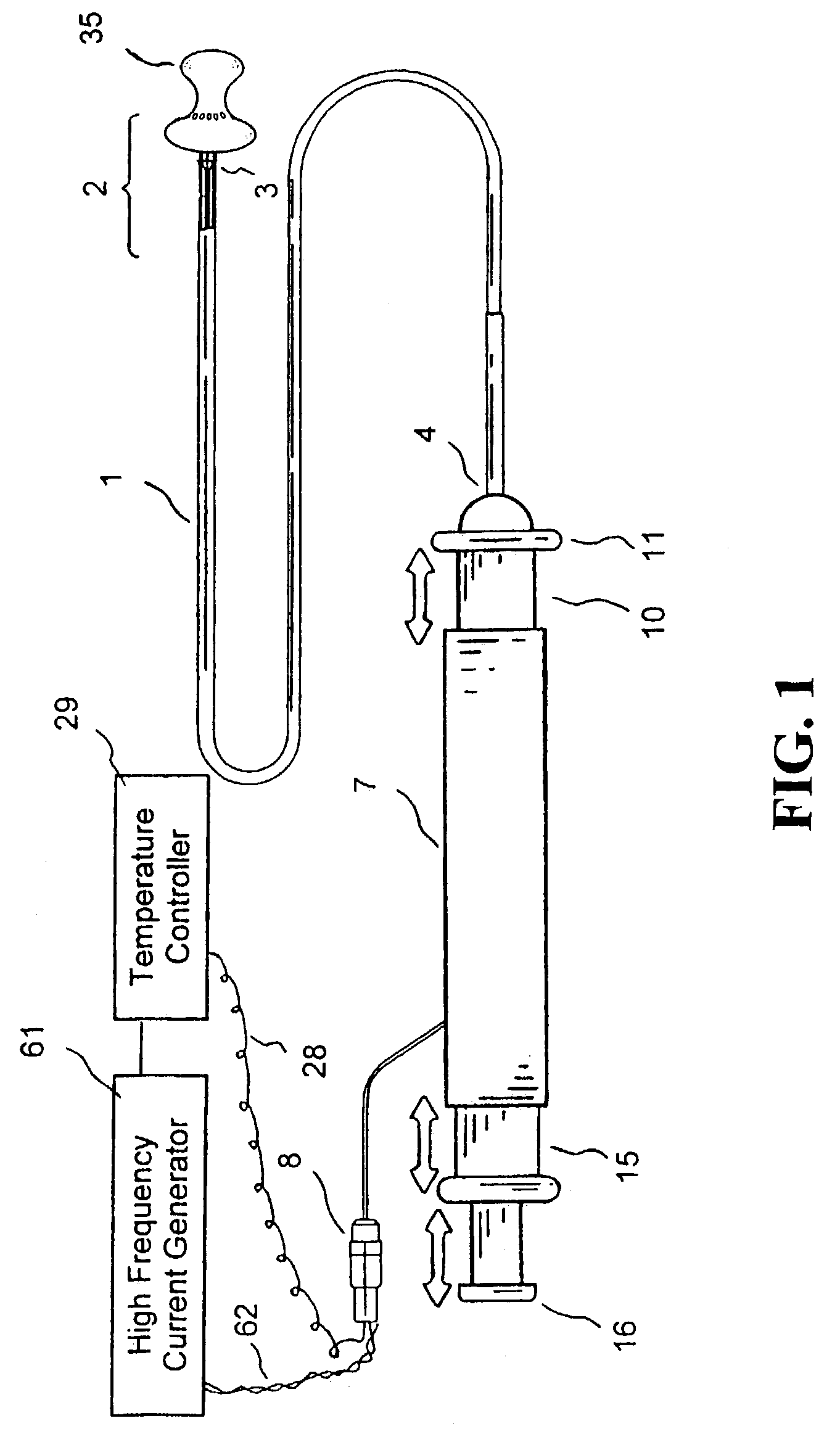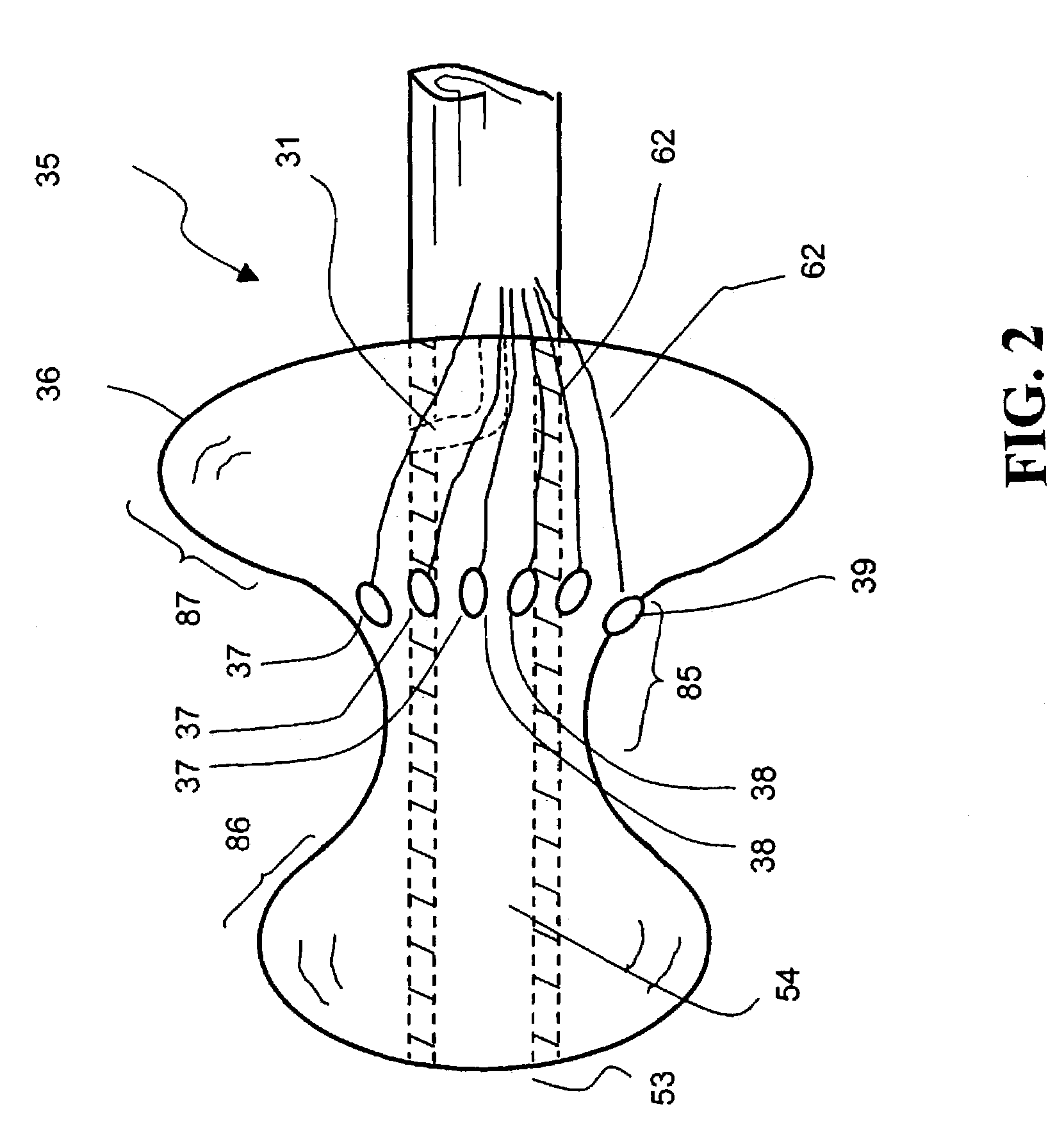Methods for treating and repairing mitral valve annulus
- Summary
- Abstract
- Description
- Claims
- Application Information
AI Technical Summary
Benefits of technology
Problems solved by technology
Method used
Image
Examples
first embodiment
[0061]FIG. 1 shows a catheter system having a flexible tissue-contactor member 35 and electrode element means at its distal tip section 2 constructed in accordance with the principles of the present invention. As disclosed in the current invention, the tissue-contactor member 35 is generally configured to be retracted within one of the at least one lumen 14 during catheter insertion into and removal from the patient.
[0062]FIG. 2 shows a detailed cross-sectional view of the distal tip section 2 of the catheter system according to FIG. 1, comprising a deployed tissue-contactor member 35 for treating the tissue of an annular organ structure. In a first preferred embodiment, the tissue-contactor member 35 may comprise a “double-mound” shaped balloon made of flexible expandable biocompatible material selected from a group consisting of silicone, latex, polyurethane, fluoro-elastomer, polypropylene, polyethylene, polyethylene terephthalate, nylon, and a combination thereof. The “double-mo...
second embodiment
[0068]FIG. 6 shows a third step of deploying a tissue-contactor member 45 of the catheter system in FIG. 3 for treating the tissue of an annular organ structure, comprising deployment of the electrode element means 48. The electrode element means 48 may comprise a plurality of basket members that are expandable radially outwardly with a conductive surface 43 on each basket member facing outwardly. Other surface areas of the basket members away from the conductive surface 43 are insulated and not conductive. As disclosed and well known to a skilled artisan, an electrical conductor means 62 for transmitting high frequency current from a high frequency current generator 61 to the electrode elements 48 is provided.
[0069]In a preferred embodiment, a method for operating a catheter system of the present invention for repairing a valvular annulus, the method may comprise: (a) percutaneously introducing the catheter system through a blood vessel to a site of the valvular annulus or introdu...
third embodiment
[0070]FIG. 7 shows a catheter system having a deployed flexible tissue-contactor member 95 and electrode element means at its distal tip section constructed in accordance with the principles of the present invention. The acorn-shaped tissue-contactor member 95 is to compressively sandwich a target annulus from two sides of the annulus at about 90 degrees to each other.
[0071]FIG. 8 shows a detailed cross-sectional view of the distal tip section 2 of the catheter system 1 according to the third embodiment in FIG. 7, comprising a deployed tissue-contactor member 95 for treating the tissue of an annular organ structure. In an example of mitral annulus treatment for illustration purposes, the first balloon 91 is intended to lie on top of the annulus while the flexible electrode elements 96 made of conductive elastomer material are intended to provide sufficient therapeutic energy for treating the annulus. The second balloon 59 is intended to lie against the inner wall of the annulus so t...
PUM
 Login to View More
Login to View More Abstract
Description
Claims
Application Information
 Login to View More
Login to View More - R&D
- Intellectual Property
- Life Sciences
- Materials
- Tech Scout
- Unparalleled Data Quality
- Higher Quality Content
- 60% Fewer Hallucinations
Browse by: Latest US Patents, China's latest patents, Technical Efficacy Thesaurus, Application Domain, Technology Topic, Popular Technical Reports.
© 2025 PatSnap. All rights reserved.Legal|Privacy policy|Modern Slavery Act Transparency Statement|Sitemap|About US| Contact US: help@patsnap.com



